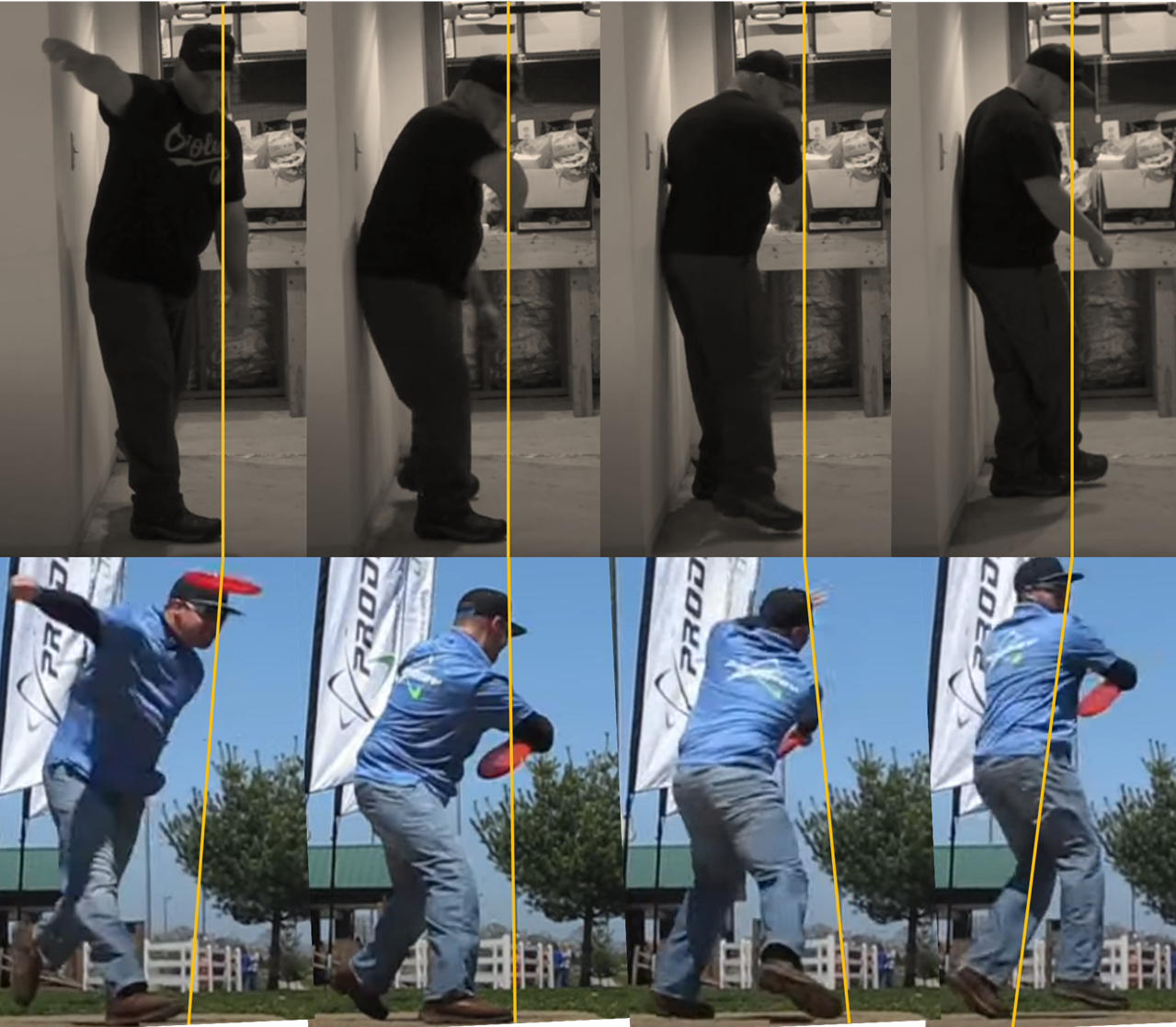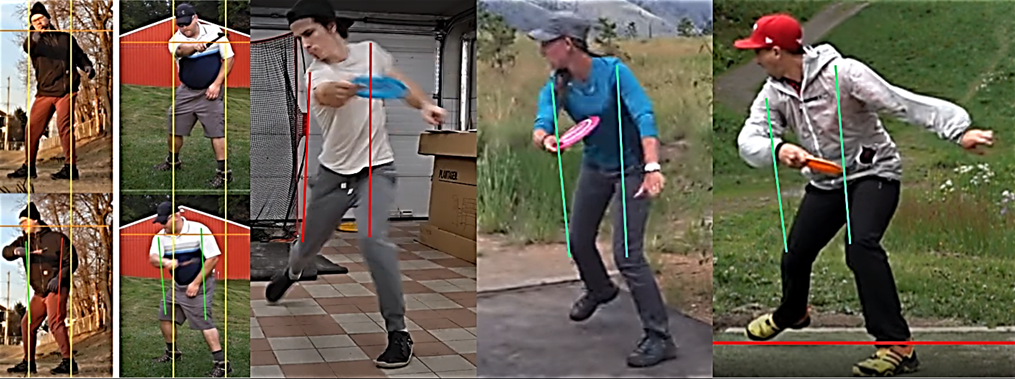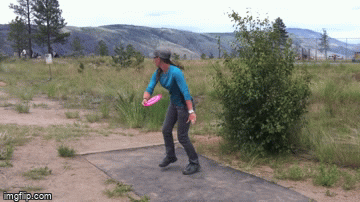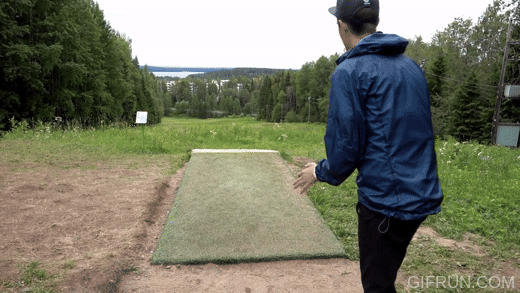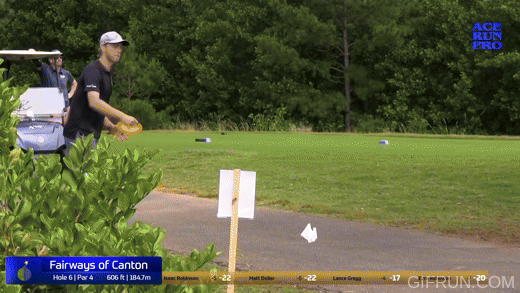Good basis for discussion - I'll do my best here.
Why people get so confused looking at stillframes and slow motion
IMHO one of the problems that people have learning the "posture theory" of the swing online is that they need to pair and understand still frames with the real-time
action patterns in their head and in the movement. Never just look at a 2D still frame. Look at the source videos and see what happens before and after the still frame, preferably in 3D and in real time if you can.
Head, shoulders, knees, and toes (knees, and toes!)
In the source video for your second image, watch how the player awkwardly brings their entire upper body way past the yellow line on the left, whereas Sidewinder has his shoulder pass through that vertical line with everything "stacked" over the knee. As the player on the left tilts their whole body over that imaginary line, notice that the knee itself is also moving and collapsing toward the West side of the tee. Sidewinder's immediately starts clearing his hip up and back to power the swing without the knee leaking West, and instead it goes East. If you do what the player on the left does, you can - you guessed it! - **** up your knee. If you do it like the player on the right, you get more out of your mAss leading the disc more directly toward the target, more backswing tension for power, and significantly less pressure on your knee, which more quickly clears out of the way if you land on it properly with significantly less torque on the knee soft tissues.
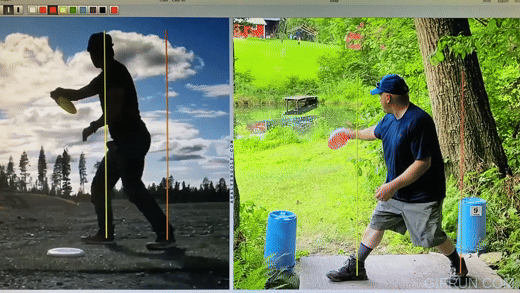
What is swinging "inside posture", and is Robinson doing it?
Swinging inside or outside posture needs to be understood relative to the rest of the body and the tilted axis it moves on, not just the ground. Sidewinder and the touring guys are all swinging "inside" their posture. Sidewinder's axis is using the wall, and he is more upright with less hinging at the hips.
But notice that the tilted axis the body's balance moves on is also East-to-West, not just North to South:
Accounting for that axis, notice where GG's knee goes as soon as his foot is starting to load up and transfer force up the chain. Notice when the shin is "vertical" relative to the ground after first coming in with a slant:
If you then look at Robinson, you then can see how the tilted axis is very pronounced throwing on his preferred hyzer angle. This guy is very athletic and quick and light on his feet, and balances exceedingly well to get everything he can out of that side shuffle hop (rather than X-hop). Notice that his leading shoulder still passes through the imaginary line, and his whole posture is balanced "inside" his toes and head. As he swings, the leading elbow will swing through the imaginary "wall" like Inside Swing, which in this image would be extremely tilted on that yellow line. Now you know part of his source of power despite some relative limitations to the side shuffle hop in pure mechanical terms.
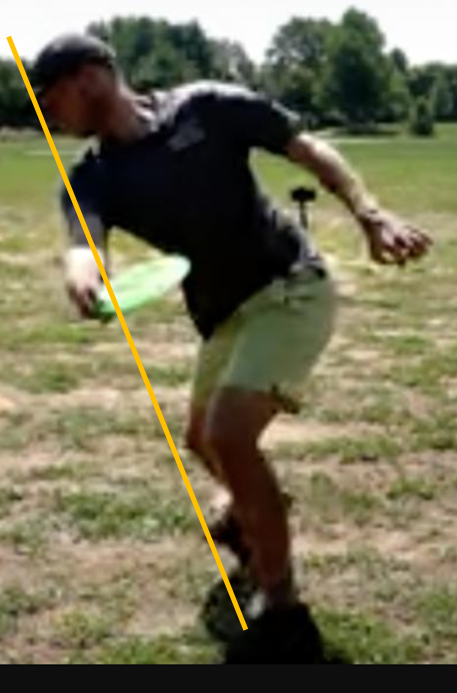
However, there are some unique aspects to Robinson's form mentioned elsewhere, and I'm oversimplifying a few things for the sake of the example. Part of his side shuffle hop and posture do bring his plant side more directly toward the target than many X-hoppers/steppers, and his overall stacking is a little distinctive due to that extreme preservation of 90 degrees at the pocket and tremendous horizontal-to-vertical compression transition he pulls off. The sequence of his move is similar to a high level X-hopper, but the relative timing and rhythm are different, so on any particular camera angle at any moment, you will notice differences. You can also notice differences accordingly within X-hoppers, etc.
I will remind the dear reader not to retreat into the comfort, confusion, and criticism of the strictly 2D world. You need "4D vision" to understand the influences of form, camera angles, and postures. Watch in real time, consider where the angle is relative to the posture and form, try to understand where the tilted axis is, try to "see" the wall on that axis. When and how is the player swinging through the wall with the elbow? Is it "inside" the posture or not? Does the timing or shin angle look exactly the same at the "same time" in everyone?
Just want to emphasize some of the key mechanical points and why Robinson is posturally closer to Eagle than the amateur in seabas22's example than it may first appear once you account for the difference in overall mechanics including the side shuffle hop, related rhythm/sequence/timing issues and tilted swing axis, camera angle, etc.




